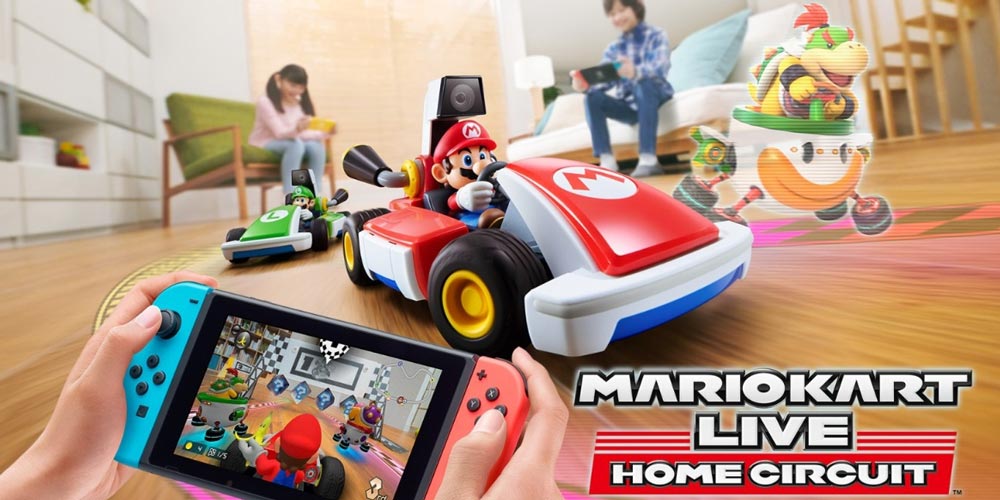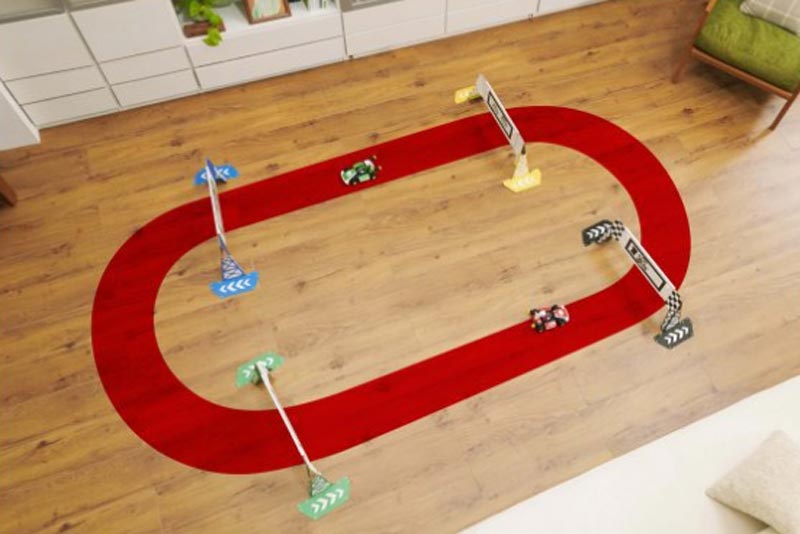Nintendo’s Newest Mario Kart Comes in Augmented Reality
Mario Kart was first launched in 1992 for the Super Nintendo. Since then, Nintendo has built 13 versions of the game. A new sequel christened Mario Kart Live: Home Circuit is coming to the Nintendo Switch this fall and it is a revolutionary version in many ways, especially in its super experimental UX.

The newest Mario Kart will come in augmented reality, transforming the Nintendo Switch into a controller for a real toy race cart. The kart is equipped with a camera to provide players with a first-person view of the kart’s perspective as it passes around them in the bedroom, living room or anywhere there is some open space to play the game.
The augmented reality version of the Mario Kart on the Switch console enables the player to control Mario or Luigi via a remote-controlled physical mini-kart on a marked racing track running through the playing space, be it in the living room or the kitchen meanders.
Players mark the race track using a total four gates and two signposts that also serve as markings for the cameras built into the mini go-karts. This is what enables the karts to orientate themselves in the space as well as with one another.
The Nintendo Switch becomes a remote control for the real go-kart. While the player does not see the kart directly, they can control it digitally via the gates of the real race track through a live image of the go-kart camera on the switch or a TV screen.
Because players view the camera image rather than the remote-controlled kart, Nintendo is able to add various digital elements to the real race track just like in the traditional Mario Kart games. For example, if a player ignites the turbo mushroom, the real kart runs faster for a brief moment. If you are hit by a digital red tank, the real kart stops.
How Does the New Mario Kart Build the Course?
The player begins by placing a few gates bundled with the game on the real floor surface. From here, the game sets up one of the several tracks ranging from simple oval tracks to the more complicated curves. The setup is done in such a way as to avoid obstacles such as couches, coffee tables or even pets in the room. It is still unclear how the exact setup as well as the customization works.

As the player races the kart around the course that they have just set up, they can experience various kinds of augmented reality effects including power ups, glowing boundaries and even their racing competitors who appear on screen. This appear as if they actually exist in your home.
If a player runs over a virtual item on the course such as a nitro-boosting mushroom, the kart actually accelerates. If the player hits some troublesome banana peel, they will see the kart actually losing some control. The game allows up to four players to race their karts in the same space.
Mario Kart Live: Home Circuit to be Released in October
The augmented reality version of Nintendo’s Mario Kart will be released on October 16 with the game priced at $99 per set. One set includes the following: –
- Four gates
- A Mario or Luigi kart
- Two direction indicators
- A USB charging cable
Up to four players can compete in augmented reality simultaneously but every player will need their kart.
Nintendo is Experimenting with Both AR and VR
Mario Kart Live is Nintendo’s second foray into the XR world for Nintendo Switch. With the Labo VR, Nintendo brought cardboard VR headsets into the market last year. The Labo VR can be assembled in different variations and for virtual reality experiments as well as for classic gamer titles such as Zelda and Super Mario.
Apart from this attempt, Nintendo hasn’t dealt with virtual reality since then. Nintendo’s new Lite model doesn’t support Labo VR. For VR arcades, Bandai Namco uses the Mario Kart license for a virtual reality simulator with fully featured VR headsets.
Since its emergence, augmented reality has mostly found uses in gimmicks such as Snapchat’s face filters. It is these that still account for the most successful commercialization of the technology even though it is beginning to make some headway into the retail front such as in product measurements and visualizations.
On the hardware front, Microsoft’s HoloLens is perhaps one of the most technically impressive in the industry and it has been positioned as an enterprise AR headset for businesses. The biggest AR flop has been Magic Leap which, in spite of billions of dollars in fundraising from big-name VC firms and tech giant such as Google, has been unable to figure out a formula for end-user AR hardware even as new players such as Nreal make some good headway on this front.
https://virtualrealitytimes.com/2020/09/05/nintendos-newest-mario-kart-comes-in-augmented-reality/https://virtualrealitytimes.com/wp-content/uploads/2020/09/Mario-Kart-Live-Home-Circuit-600x300.jpghttps://virtualrealitytimes.com/wp-content/uploads/2020/09/Mario-Kart-Live-Home-Circuit-150x90.jpgAugmented RealityTechnologyMario Kart was first launched in 1992 for the Super Nintendo. Since then, Nintendo has built 13 versions of the game. A new sequel christened Mario Kart Live: Home Circuit is coming to the Nintendo Switch this fall and it is a revolutionary version in many ways, especially in...Sam OchanjiSam Ochanji[email protected]EditorVirtual Reality Times - Metaverse & VR
